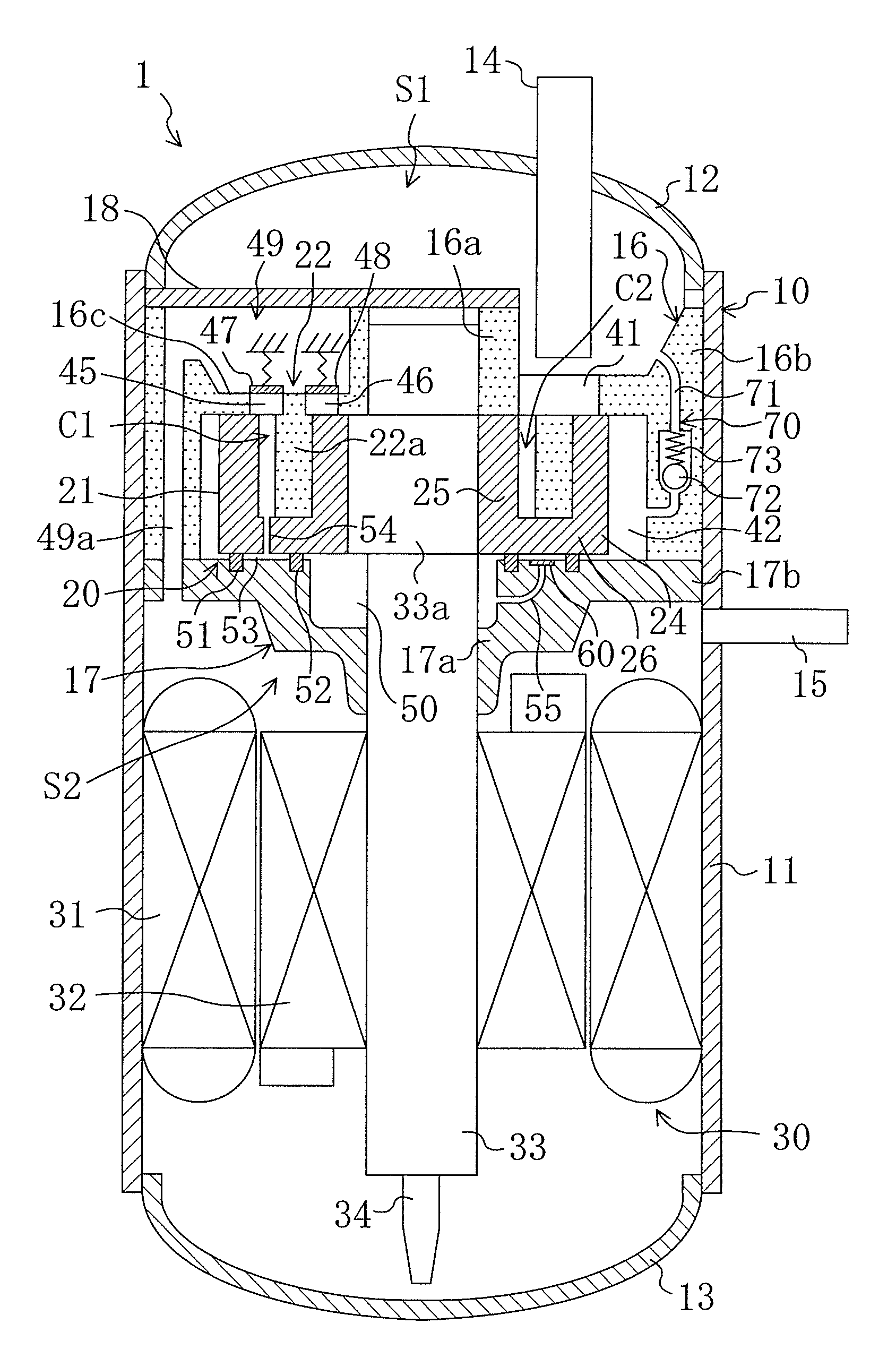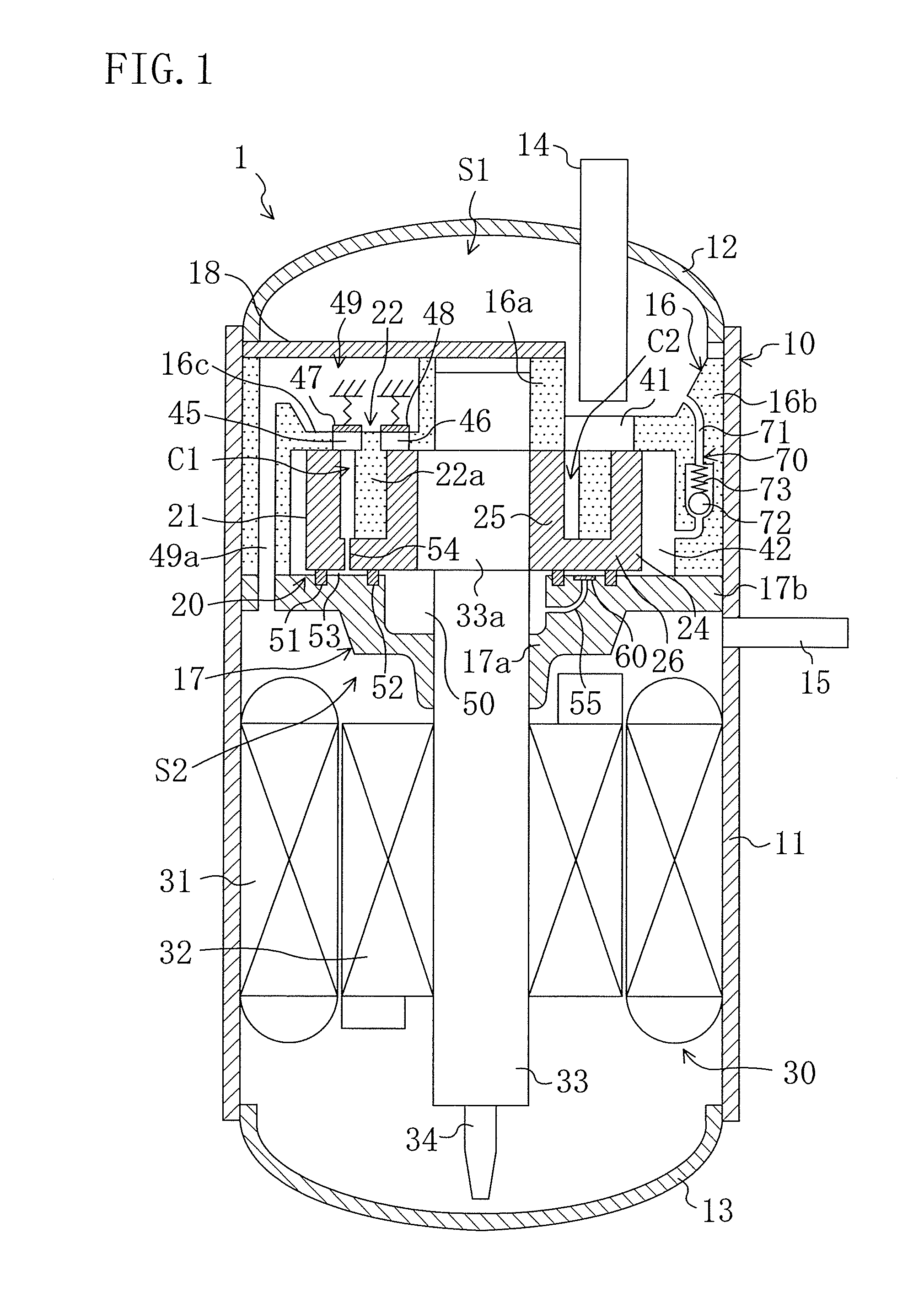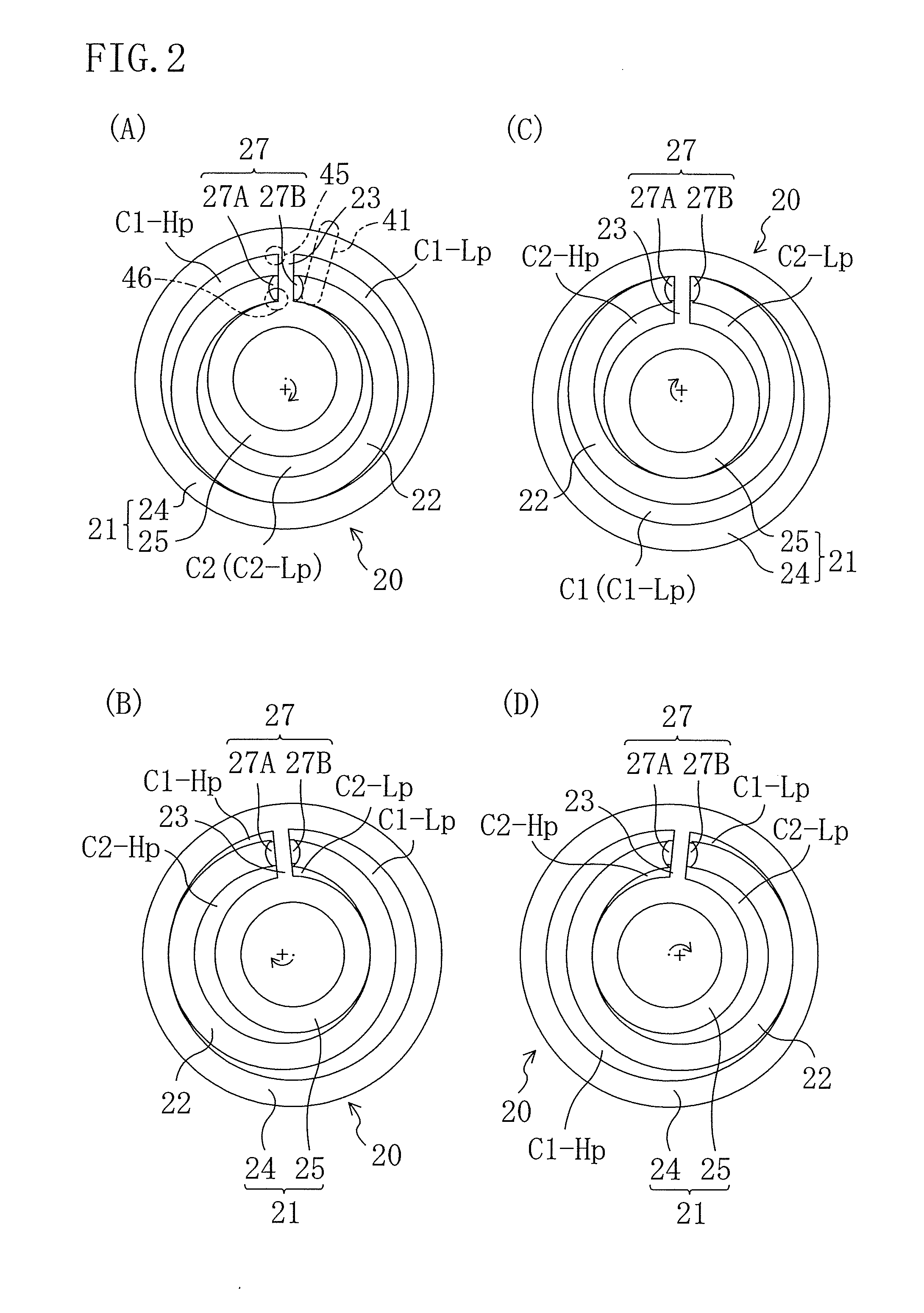Fluid machinery having annular back pressure space communicating with oil passage
a technology of annular back pressure space and flue gas, which is applied in the direction of liquid fuel engines, machines/engines, rotary/oscillating piston pump components, etc., can solve the problems of abnormal high pressure released between the wraps, and achieve the effect of increasing reducing the thrust force of the cylinder (21) and increasing the pitching moment causing the inclination of the cylinder
- Summary
- Abstract
- Description
- Claims
- Application Information
AI Technical Summary
Benefits of technology
Problems solved by technology
Method used
Image
Examples
example embodiment 1
Advantages of Example Embodiment 1
[0088]In the present example embodiment, the intermediate pressure of the back pressure chamber (53) at the back surface of the cylinder (21) is changed according to the pressure state of the outside cylinder chamber (C1), and hence, the cylinder (21) can be thrust against the piston (22) by an appropriate amount of thrust force. That is, when the pressure of the outside cylinder chamber (C1) is high to increase the pitching moment causing inclination of the cylinder (21), the thrust force to the cylinder (21) can be increased. In reverse, when the pressure of the outside cylinder chamber (C1) is low, the thrust force to the cylinder (21) can be reduced. As a result, the sliding loss by the thrust force between the cylinder (21) and the piston (22) can be reduced.
[0089]Further, the lubricant oil is filled in the back pressure chamber (53), which means that the back pressure chamber (53) is filled with non-compressive fluid, and that no gas refrigera...
modified example of example embodiment 1
[0097]As shown in FIG. 6, a fluid diode (65) may be provided rather than the one-way valve (60) as a back flow checking mechanism (60). The fluid diode (65) forms a throttling mechanism, and is provided in the middle of the oil passage (55) to throttle the middle part of the oil passage (55), thereby preventing the back flow. Two or more fluid diodes (65) may be provided, of course.
Example Embodiment 2
[0098]Example Embodiment 2 of the present invention will be described next in detail with reference to the drawing.
[0099]In the present example embodiment, a scroll compressor as shown in FIG. 7 is employed as the compression mechanism (20) unlike Example Embodiment 1 employing the eccentric rotation type piston mechanism. The inside space of the casing (10) of the rotary compressor (1) in the present example embodiment is defined into an upper space and a lower space by the compression mechanism (20). The upper space and the lower space communicate with each other to serve as the high...
example embodiment 2
Advantages of Example Embodiment 2
[0114]Thus, in the present example embodiment, the intermediate pressure of the back pressure chamber (53) at the back surface of the orbiting scroll (120) is changed according to the pressure state of the compression chambers (100), and hence, the orbiting scroll (120) can be thrust against the fixed scroll (110) by an appropriate amount of thrust force.
[0115]In addition, the lubricant oil is filled in the back pressure chamber (53), which means that the back pressure chamber (53) is filled with non-compressive fluid, and that no gas refrigerant is present in the back pressure chamber (53). This prevents pumping of the gas refrigerant. That is, gas refrigerant sucking from the back pressure chamber (53) and gas refrigerant forcing into the back pressure chamber (53), which may be caused by pressure change in the compression chambers (100), can be prevented, thereby reducing power loss.
[0116]Particularly, provision of the one-way valve (60) at the o...
PUM
 Login to View More
Login to View More Abstract
Description
Claims
Application Information
 Login to View More
Login to View More - R&D
- Intellectual Property
- Life Sciences
- Materials
- Tech Scout
- Unparalleled Data Quality
- Higher Quality Content
- 60% Fewer Hallucinations
Browse by: Latest US Patents, China's latest patents, Technical Efficacy Thesaurus, Application Domain, Technology Topic, Popular Technical Reports.
© 2025 PatSnap. All rights reserved.Legal|Privacy policy|Modern Slavery Act Transparency Statement|Sitemap|About US| Contact US: help@patsnap.com



